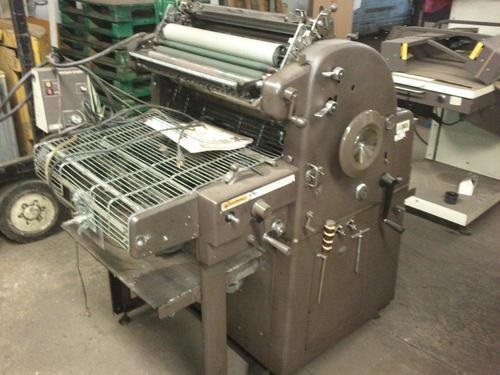Jim Continues His Thoughts. . .
Who Moved My Cheese?
 The cover design of the book caught my eye as well as the title. “Who Moved My Cheese?” it asked. It was a slender volume, no more than 96 pages as I recall, and it told the story of a number of mice that had to face change in life. The longstanding supply of cheese from which they have helped themselves is no more. “What is to be done in securing more cheese?” is the challenge facing these four mice. Written as a parable that takes place in a maze, the story engagingly describes Sniff and Scurry, and their associates, Hem and Haw, and how they go about finding more cheese. Spencer Johnson’s intention is to introduce readers to the concept of positive change and how to cope with it. The book makes for engaging reading.
The cover design of the book caught my eye as well as the title. “Who Moved My Cheese?” it asked. It was a slender volume, no more than 96 pages as I recall, and it told the story of a number of mice that had to face change in life. The longstanding supply of cheese from which they have helped themselves is no more. “What is to be done in securing more cheese?” is the challenge facing these four mice. Written as a parable that takes place in a maze, the story engagingly describes Sniff and Scurry, and their associates, Hem and Haw, and how they go about finding more cheese. Spencer Johnson’s intention is to introduce readers to the concept of positive change and how to cope with it. The book makes for engaging reading.
Shifting paradigms are always interesting, especially when they involve adjusting to new ways. Just because something has always been done in a particular way is no guarantee that such a way will always work—or that it cannot be improved.
When I first purchased my AB Dick printing press in the 1990s (more HERE), there was really only one way to produce books cost-effectively: by printing quite a lot at a time. The prevailing philosophy in the printing industry was to find a sweet-spot—establishing a printing number that was high enough to enable unit price to be attractive but not causing the publisher to have to mortgage his house to pay for the print run and then take take forever to sell the books—and not too short a print run to sell all copies too quickly. Of course, the fact that I owned a printing press did give me a strategic advantage at least when it came to the printing of sales leaflets and catalogs, but book printing was really a larger and more complex operation than my press would be able to manage.
After I relocated to Britain, the first publisher I worked for in the UK operated on the principle of having access to a fairly big warehouse to keep all the books safely stored during the time they were being fed out to the marketplace. Paper and print does not accrue in value under those circumstances, and it can be challenging to keep a large warehouse tidy and functioning in an orderly way. Maybe that got my thinking going about whether there was a better, a different way…
Other publishing wisdom I encountered in the early 2000s went like this: “We’ll print books in large quantities, but first find publishing partners—that is, buyers with whom we can engage in a kind of strategic alliance.” I liked that. It meant that the financial load could be spread and shared between two or more parties, stakeholders in each instance, and created a strong and efficient force for buying print and then for moving it into the market. I do still very much favor this approach, and I think it works really well under the right conditions.
Enter Amazon
 The “Big A” has changed a lot of things. At one time, nobody took Amazon too seriously, but not so anymore. Amazon’s ability to operate on a relatively low overhead and to have negotiated specially preferential, volume-related relationships with shippers has dealt the death knell to many vendors who had maybe become comfortable with the status quo. The reality is that people’s buying habits have changed and continue to do so. Most people today are quite relaxed in making online purchases.
The “Big A” has changed a lot of things. At one time, nobody took Amazon too seriously, but not so anymore. Amazon’s ability to operate on a relatively low overhead and to have negotiated specially preferential, volume-related relationships with shippers has dealt the death knell to many vendors who had maybe become comfortable with the status quo. The reality is that people’s buying habits have changed and continue to do so. Most people today are quite relaxed in making online purchases.
So What About a New Author?
Where does a new author, someone not yet published, fit into this shifting paradigm? There are many variables, but it’s usually fair to say that the new author is relatively without connections and can offer no track record to a prospective publisher. Jack Canfield (co-originator of the Chicken Soup for the Soul books) records how he had to work exceptionally hard to find a publisher who was prepared to take the risk with his publishing idea. But that publisher was not unhappy with the outcome. (Canfield has subsequently had several New York Times bestsellers to his credit.)
It’s a hop, skip, and jump (at least in one sense) for an unpublished author to fly solo, and there is significant temptation to do so. The ease with which self-publishing can take place has given newbie authors a lot of rope. Some such authors make good use of the rope for hanging themselves, speedily finding an in-law to help with the editing, a friend to design the cover, and a teenager to help with the uploading of files to the printer; others are more cautious and with due circumspection do a better job. The point is that homemade usually looks homemade. I’ve seen enough to make me queasy!
But let me get back to my story and to tell you why I publish. . . and to address three important questions that need to be kept under consideration.
Below: Some of the books I have published so far

1. The Question of Editing, Design, and Production Quality
It soon became apparent that I could easily help a new author (or an established one) bring a very presentable book into print. And that was gratifying for me as well as for the author! Editing and book design are closely related, and I found that even as I was working with an author, ideas were coming to me in terms of how we could develop the work to make it look like a nice project once it was in print.
Any would-be self published author MUST think carefully about how to achieve an outstandingly good result!
2. The Question of Financial Risk
So, now finding myself in the position of working with authors and others in the publishing realm, but without a full-time employer, my instinct was to push forward and to push hard in developing a new model, one that would facilitate the kinds of people who are gifted writers, but who, for whatever reason, are not able to achieve success with a mainstream or established publisher. One of the most likely things that will happen to a self-published author is that he or she will end up with numbers of cartons of a well (or badly) produced book in the garage. The first ten or twenty copies were relatively easy to sell (or give away as complimentary items); and then things just dried up. That can be an expensive mistake!
DSR Printing
 So I reasoned that we could find a way around that by using digital short-run printing (costs have become much lower in recent years) so that only a small number of books at a time would need to be produced. Wow! That made such a difference to how people saw things! In fact, I coined the term “Perpetually in Print” (more info HERE). An author’s book never has to go out of print. And an author never has to face the sight of cartons of unsold print in the garage gathering dust!
So I reasoned that we could find a way around that by using digital short-run printing (costs have become much lower in recent years) so that only a small number of books at a time would need to be produced. Wow! That made such a difference to how people saw things! In fact, I coined the term “Perpetually in Print” (more info HERE). An author’s book never has to go out of print. And an author never has to face the sight of cartons of unsold print in the garage gathering dust!
Then I turned my attention to how I could help people promote (and therefore sell) their books. That was fun, if you find Facebook and such portals to be fun! This is all about enabling an author to use his or her voice and to achieve maximum amplification through low-cost or no-cost promotional portals. But that’s for another post I’ll write another time!
3. The Question of Distribution Efficiency
But that still did not quite solve the challenge of global distribution. I loved it that my US-based clients could enjoy success in selling their books in the States, but what about my clients in the UK? Well, I am happy to report that there turned out to be a solution—a very good solution to that, too, and one of the print-and-distribute models that I now use is highly efficient in making my authors’ books available anywhere in the world, usually available to ship within just a couple of days.
It was pleasing to be able to see good and reasonable answers to each of these challenging questions as I moved forward in my thinking.
Doing It the Right Way
 One of my clients–a self-published author (in fact, he has since started his own imprint with my involvement)–was happy to report to me that when he made his book publicly available, one of his associates spoke these words to him: “Dewey, this beautiful book is self-published, and yet it does not look self-published.” And that is exactly the point! An author who has invested years and years, who has toiled tirelessly to produce a manuscript surely deserves the very best treatment and the prospect of getting a really pleasing outcome from such labors!
One of my clients–a self-published author (in fact, he has since started his own imprint with my involvement)–was happy to report to me that when he made his book publicly available, one of his associates spoke these words to him: “Dewey, this beautiful book is self-published, and yet it does not look self-published.” And that is exactly the point! An author who has invested years and years, who has toiled tirelessly to produce a manuscript surely deserves the very best treatment and the prospect of getting a really pleasing outcome from such labors!
The “Either/Or” and “Both/And” Relationship
There is something of a watershed emerging in publishing. One the one side, there is the traditional model, a model that I love and that continues to be effective. I work closely with established publishers, publishers who have been around for a long time and will continue to be so. But there is a new way of publishing, and it is imperative that established publishers recognize the new dynamic and, where appropriate, make use of it for some of their printing needs. Of course, for the newbies who are careful enough not to hang themselves on the long length of rope suddenly available, judicious use of new technologies and systems provide the enabling to bring them into new realms of effecitveness.
To one of my clients, I recently used the analogy of what the skies are like to aircraft. Her husband, a retired doctor, loves flying his single-engine, four-seater Cessna 182. A 182 is not a Boeing 747. But it flies in the same skies, and uses the same principles of thrust and lift in order to stay airborne, and has many of the same capabilities. And so it is that she, a self-published author who may be unknown to many, is able to appear side by side with the greats when it comes to platforms such as Amazon, and the public response to her writing (expressed in customer ratings and reviews) has much the same visibility authors who may be much better known.
Ask me whether I am an either/or person or a both/and person, and I will tell you immediately that I am the latter, especially when it comes to publishing. And the interesting thing is that the two can sometimes morph together in related projects. An author who is going to enjoy spectacular success will most likely have his or her books printed many at a time, and published and promoted by a publisher and distribution network that can accommodate the speed and urgency of demand, and where the cost of sale relative to the final selling price dynamic is in a satisfactory and realistic relationship. Supply and demand factors often determine this quite naturally.
But there is so much to be said for the author whose books are just quietly selling through key portals, and where the ongoing activity is sustained through quiet and unobtrusive means. You might not find such books in window displays or endcaps in bookstores, and the authors might not be doing public signings, but the reality is that the reader interest and demand is there, and it fuels the life of the book over a good length of time.
There is More to Come. . .
I cannot complete this cluster of posts without sharing a little about some of the books I have published, and introducing you to some of the authors and the fun we had in getting the books from concept to completion. So look out for the next post or two in this series!














 The cover design of the book caught my eye as well as the title. “Who Moved My Cheese?” it asked. It was a slender volume, no more than 96 pages as I recall, and it told the story of a number of mice that had to face change in life. The longstanding supply of cheese from which they have helped themselves is no more. “What is to be done in securing more cheese?” is the challenge facing these four mice. Written as a parable that takes place in a maze, the story engagingly describes Sniff and Scurry, and their associates, Hem and Haw, and how they go about finding more cheese. Spencer Johnson’s intention is to introduce readers to the concept of positive change and how to cope with it. The book makes for engaging reading.
The cover design of the book caught my eye as well as the title. “Who Moved My Cheese?” it asked. It was a slender volume, no more than 96 pages as I recall, and it told the story of a number of mice that had to face change in life. The longstanding supply of cheese from which they have helped themselves is no more. “What is to be done in securing more cheese?” is the challenge facing these four mice. Written as a parable that takes place in a maze, the story engagingly describes Sniff and Scurry, and their associates, Hem and Haw, and how they go about finding more cheese. Spencer Johnson’s intention is to introduce readers to the concept of positive change and how to cope with it. The book makes for engaging reading. The “Big A” has changed a lot of things. At one time, nobody took Amazon too seriously, but not so anymore. Amazon’s ability to operate on a relatively low overhead and to have negotiated specially preferential, volume-related relationships with shippers has dealt the death knell to many vendors who had maybe become comfortable with the status quo. The reality is that people’s buying habits have changed and continue to do so. Most people today are quite relaxed in making online purchases.
The “Big A” has changed a lot of things. At one time, nobody took Amazon too seriously, but not so anymore. Amazon’s ability to operate on a relatively low overhead and to have negotiated specially preferential, volume-related relationships with shippers has dealt the death knell to many vendors who had maybe become comfortable with the status quo. The reality is that people’s buying habits have changed and continue to do so. Most people today are quite relaxed in making online purchases.



 Working in publishing significantly connected me with some fairly well-known authors, including people like John Blanchard, John MacArthur, Andy McIntosh, Roger Ellsworth and many others (you could see a part list
Working in publishing significantly connected me with some fairly well-known authors, including people like John Blanchard, John MacArthur, Andy McIntosh, Roger Ellsworth and many others (you could see a part list  Making a Plan
Making a Plan As good J C Ryle said, “The best way to do something is to do it.” So I decided that the best way to start was by pushing ahead in some projects, feeling my way forward using social media and making myself as useful as I was able to. Principles lead to empiricals. “Just try doing it,” I counseled myself. One of the concerns driving me was to establish fair competency in website building and development, so while working on some editing projects for P&R Publishing, I also forayed into the world of Google-Sites and WordPress, soon finding the latter to be quite powerful, and that even eCommerce was not as complex as it might first seem. With thanks, under God, for free online tutorials and perusing numerous FAQs, it was not long before I found my way forward in developing websites for other people to help them promote their writing ministries. These include
As good J C Ryle said, “The best way to do something is to do it.” So I decided that the best way to start was by pushing ahead in some projects, feeling my way forward using social media and making myself as useful as I was able to. Principles lead to empiricals. “Just try doing it,” I counseled myself. One of the concerns driving me was to establish fair competency in website building and development, so while working on some editing projects for P&R Publishing, I also forayed into the world of Google-Sites and WordPress, soon finding the latter to be quite powerful, and that even eCommerce was not as complex as it might first seem. With thanks, under God, for free online tutorials and perusing numerous FAQs, it was not long before I found my way forward in developing websites for other people to help them promote their writing ministries. These include  An email that dropped into my in box from an online form submission from one of my websites was very interesting, and even more so when I phoned the man from whom it originated. “I represent a publishing family,” he said, “And in doing due diligence, we wish to establish whether you might be the right person to help in their publishing ministry.” It was an extra surprise, a pleasant one, too, to learn that the publishing family was none other than that of Tedd and Margy Tripp. Tedd (pictured here) is well known for his remarkable book Shepherding a Child’s Heart, a manuscript derived from a doctoral thesis that nobody wanted to publish when he first wrote it, so it ended up being self published (under the quickly thought-up name of Shepherd Press). Now with a sales history of well in excess of a million copies, it is a book that has challenged, blessed, and guided countless parents and teachers over the years. To cut a long story short, following a weekend visit to northern Pennsylvania, there commenced a relationship between me and Shepherd Press that enables me to be of service in the promotion and development of the ministry, and to help in recruiting new authors and rolling out of new resources. That’s just one of the various things that I love doing. You can find out more about Shepherd Press
An email that dropped into my in box from an online form submission from one of my websites was very interesting, and even more so when I phoned the man from whom it originated. “I represent a publishing family,” he said, “And in doing due diligence, we wish to establish whether you might be the right person to help in their publishing ministry.” It was an extra surprise, a pleasant one, too, to learn that the publishing family was none other than that of Tedd and Margy Tripp. Tedd (pictured here) is well known for his remarkable book Shepherding a Child’s Heart, a manuscript derived from a doctoral thesis that nobody wanted to publish when he first wrote it, so it ended up being self published (under the quickly thought-up name of Shepherd Press). Now with a sales history of well in excess of a million copies, it is a book that has challenged, blessed, and guided countless parents and teachers over the years. To cut a long story short, following a weekend visit to northern Pennsylvania, there commenced a relationship between me and Shepherd Press that enables me to be of service in the promotion and development of the ministry, and to help in recruiting new authors and rolling out of new resources. That’s just one of the various things that I love doing. You can find out more about Shepherd Press  Because the Shepherd Press work is flexible and part-time, there are many other things that I do in publishing. Like when Simon Robinson, my good friend in England, told me that he had been writing some notes all about anxiety. “I think we should make a book of it,” I ventured. “If you could get to 31 readings, it could even become a daily reading book.” Simon warmed to the idea immediately and soon after we were exchanging emails and sharing ideas. The outcome not long afterwards was a book in a black and red cover with an anxious man regarding people holding the book—the man on the cover that is—with 31 easy-to-read chapters, complete with Bible reference, application points, and a suggested prayer to pray—even if just to prime the pump, as it were–all to strategically help readers get over the worry factor.
Because the Shepherd Press work is flexible and part-time, there are many other things that I do in publishing. Like when Simon Robinson, my good friend in England, told me that he had been writing some notes all about anxiety. “I think we should make a book of it,” I ventured. “If you could get to 31 readings, it could even become a daily reading book.” Simon warmed to the idea immediately and soon after we were exchanging emails and sharing ideas. The outcome not long afterwards was a book in a black and red cover with an anxious man regarding people holding the book—the man on the cover that is—with 31 easy-to-read chapters, complete with Bible reference, application points, and a suggested prayer to pray—even if just to prime the pump, as it were–all to strategically help readers get over the worry factor.
 A family situation arose in which we felt that our time in South Africa was coming to an end and that relocation to the UK was necessary. By the late 1990s, I had developed significant and strategic relationships with several UK- and US-based publishers, so it was not entirely an unexpected development for me to receive a job offer from Darlington-based Evangelical Press, now known as EP Books. David Clark’s crisp voice on my cell phone as he spoke to me from England (I was in the bank in Johannesburg at the time) spoke confidently of EP’s interest in hiring me, and in due course, the contract was signed for my impending position of International Sales Manager, with particular activity anticipated in developing sales in the North American market.
A family situation arose in which we felt that our time in South Africa was coming to an end and that relocation to the UK was necessary. By the late 1990s, I had developed significant and strategic relationships with several UK- and US-based publishers, so it was not entirely an unexpected development for me to receive a job offer from Darlington-based Evangelical Press, now known as EP Books. David Clark’s crisp voice on my cell phone as he spoke to me from England (I was in the bank in Johannesburg at the time) spoke confidently of EP’s interest in hiring me, and in due course, the contract was signed for my impending position of International Sales Manager, with particular activity anticipated in developing sales in the North American market.

 Jim Dearmore was a Texan in Africa. His story was remarkable for its adventure and spiritual verve. He and his wife, Georgia, had been missionaries in the Congo and then moved to what was then Rhodesia before ending up in the northern regions of South Africa, where they continued their missionary endeavors. His outspokenness against Marxist doctrine made him the kind of person who probably would not be welcome to stay in the country once an ANC government was established. He was one of my favorite customers, a godly man, a no-nonsense American in whom there was no guile. I loved the way his gas-guzzling 1970s automobile drove into the parking lot, so much like a great ship, taking as it seemed several minutes to come to a halt as it berthed. From deep within its recesses (it may have been a Cadillac; it was huge) he would emerge, his short white beard outlined against the greenery in the background. His eyes were kindly, always twinkling. His voice deep and his drawl slow and pronounced, he always spoke wisely and well, often punctuating his speech with apt quotations from the Bible, always in the King James version.
Jim Dearmore was a Texan in Africa. His story was remarkable for its adventure and spiritual verve. He and his wife, Georgia, had been missionaries in the Congo and then moved to what was then Rhodesia before ending up in the northern regions of South Africa, where they continued their missionary endeavors. His outspokenness against Marxist doctrine made him the kind of person who probably would not be welcome to stay in the country once an ANC government was established. He was one of my favorite customers, a godly man, a no-nonsense American in whom there was no guile. I loved the way his gas-guzzling 1970s automobile drove into the parking lot, so much like a great ship, taking as it seemed several minutes to come to a halt as it berthed. From deep within its recesses (it may have been a Cadillac; it was huge) he would emerge, his short white beard outlined against the greenery in the background. His eyes were kindly, always twinkling. His voice deep and his drawl slow and pronounced, he always spoke wisely and well, often punctuating his speech with apt quotations from the Bible, always in the King James version. I loved his straightforwardness, his directness, his call-a-spade-a-spade mentality. He was no stranger to hardship and to hard work. One day he told me about his A B Dick, a printing press he housed in his garage. With relocation back to the USA in mind, he needed to sell it, and he considered that I should buy it. At the time, I was running the book business I had started, and it involved quite a lot of printing that I usually got done in a copy center in Johannesburg. I was also editing a magazine at the time, Reformation Africa South, so that put me in connection with a commercial printer, Leonard Venter. Len was another character. Everything he described was “fantastic.” I mentioned Dr. Dearmore’s offer to sell his A B Dick press to me. In his Germiston accent he enthusiastically said to me, “Fantastic! Jim, my boet, let’s go check out the doctor’s printing press.” A few days later, riding along in his Toyota Camry at around 100mph, we made the long journey north of Pretoria to Dr. Dearmore’s location in a very short space of time.
I loved his straightforwardness, his directness, his call-a-spade-a-spade mentality. He was no stranger to hardship and to hard work. One day he told me about his A B Dick, a printing press he housed in his garage. With relocation back to the USA in mind, he needed to sell it, and he considered that I should buy it. At the time, I was running the book business I had started, and it involved quite a lot of printing that I usually got done in a copy center in Johannesburg. I was also editing a magazine at the time, Reformation Africa South, so that put me in connection with a commercial printer, Leonard Venter. Len was another character. Everything he described was “fantastic.” I mentioned Dr. Dearmore’s offer to sell his A B Dick press to me. In his Germiston accent he enthusiastically said to me, “Fantastic! Jim, my boet, let’s go check out the doctor’s printing press.” A few days later, riding along in his Toyota Camry at around 100mph, we made the long journey north of Pretoria to Dr. Dearmore’s location in a very short space of time. The deal agreed some weeks later, we knew we would need space to house it, so a few months later, we commenced building a double garage on our Strubens Valley property. Getting the press from where Dr. Dearmore had housed it to our location was challenging; it weighed more than a ton. And it arrived with a bewildering number of rollers and peripheral items, all with special names and functions that would need to be learned!
The deal agreed some weeks later, we knew we would need space to house it, so a few months later, we commenced building a double garage on our Strubens Valley property. Getting the press from where Dr. Dearmore had housed it to our location was challenging; it weighed more than a ton. And it arrived with a bewildering number of rollers and peripheral items, all with special names and functions that would need to be learned!
Recent Comments